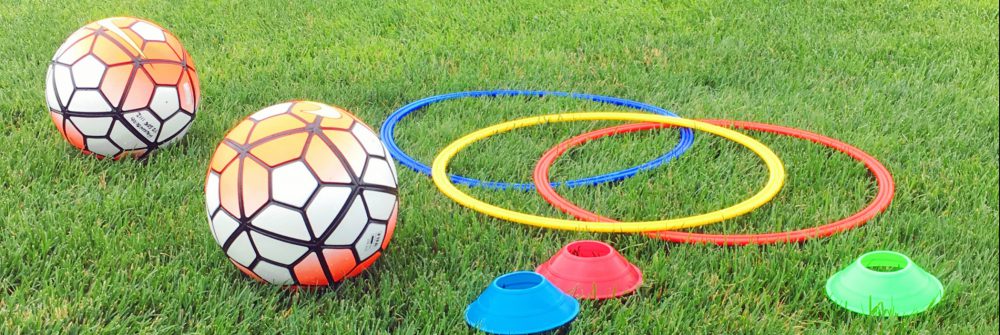Goal setting is the process of defining what you want to achieve and creating a roadmap to reach those targets. Setting goals helps you focus on what is important, develop a sense of purpose, and ultimately leads to personal success.
The number of goals a youth athlete should have at any one time is subjective and depends on the individual. However, there are some general guidelines that can help you determine the right number of goals for you. According to Rutgers Youth Sports Research Council, effective goals have a high priority and are few in number. While a young athlete may have many things to master, setting too many goals tend to diffuse their focus.
It is recommended to set performance rather than outcome goals. Performance is what the athlete controls, while outcomes are frequently controlled by others. For instance, once taught, a young basketball player can know and select the best position for guarding his or her “man”. However, effectively stopping the opponent from scoring may depend on the speed, agility and skill of the other player.
The number of goals a youth athlete should have at any one time can vary depending on several factors, including the athlete’s age, experience, and the specific sport they are involved in. Here are some general guidelines to consider:
- Make SMART Goals -Goals should be Specific, Measurable, Achievable, Relevant, and Time-bound. This means goals should be defined in a way that allows an athlete to track progress and determine when they have reached them
- Focus on a Few Key Goals: It’s generally a good idea for youth athletes to focus on a small number of key goals at a time, typically no more than 2-3. This allows them to concentrate their efforts and make meaningful progress.
- Age and Development Level: Younger athletes may benefit from having fewer goals, as they are still developing their skills and physical abilities. As they gain experience and maturity, they can handle more complex goals.
- Short-Term vs. Long-Term Goals: Youth athletes should have a mix of short-term and long-term goals. Short-term goals could be weekly or monthly objectives, while long-term goals might span a season or even a year.
- Specificity: Goals should be specific and measurable. For example, instead of setting a vague goal like “get better at basketball,” a more specific goal might be “improve free throw shooting accuracy by 10% in the next two months.”
- Realistic and Achievable: Goals should be challenging but realistic. Setting unattainable goals can lead to frustration and demotivation.
- Individualized: Each athlete is unique, so their goals should be tailored to their abilities, strengths, and weaknesses. What works for one athlete may not work for another.
- Feedback and Adjustments: Athletes should regularly assess their progress toward their goals and make adjustments as needed. If a goal has been achieved, new goals can be set.
- Balanced Goals: It’s important to strike a balance between different aspects of the sport, such as skill development, physical conditioning, and mental preparation.
- Consult Coaches and Mentors: Coaches and mentors can play a crucial role in helping athletes set appropriate goals and providing guidance on achieving them.
- Develop a Progressive Reward System: Rewarding oneself after achieving a milestone can help maintain motivation and focus.
- Have a weekly and monthly review: Regularly reviewing progress towards goals helps athletes stay on track and make adjustments as needed.
- Use the right tool: There are many tools available to help athletes track their progress towards their goals, such as apps, journals, or spreadsheets.


In conclusion, goal setting is a fundamental aspect of a youth athlete’s journey towards personal success. The number of goals an athlete should set is subjective, with effective goals being prioritized and limited in number. It is advisable to focus on performance rather than outcome goals, ensuring control lies within the athlete’s capabilities. Several factors, including age, experience, and sport, influence the ideal number of goals. Implementing guidelines such as SMART criteria, concentrating on a few key goals, considering age and development, and incorporating a mix of short-term and long-term objectives, contributes to a well-rounded goal-setting strategy. Individualization, regular feedback, and consultation with coaches and mentors play crucial roles in refining and achieving these goals, fostering a balanced approach to skill development, physical conditioning, and mental preparation. Finally, integrating progressive reward systems, regular reviews, and utilizing appropriate tracking tools enhance the effectiveness of goal setting in maintaining motivation and focus throughout the athlete’s journey.
Follow this blog and on social media, @coachrich8 on Instagram, Facebook, and Twitter to learn critical life skills through youth sports. Stay tuned for more “Secret Sauce for Youth Athletes”.
Get the 3rd Edition of “The Battle Plan for Youth Athletes” Goal tracking and Daily Journal – establish daily/weekly routines to give youth athletes a competitive advantage. Available at Amazon.
